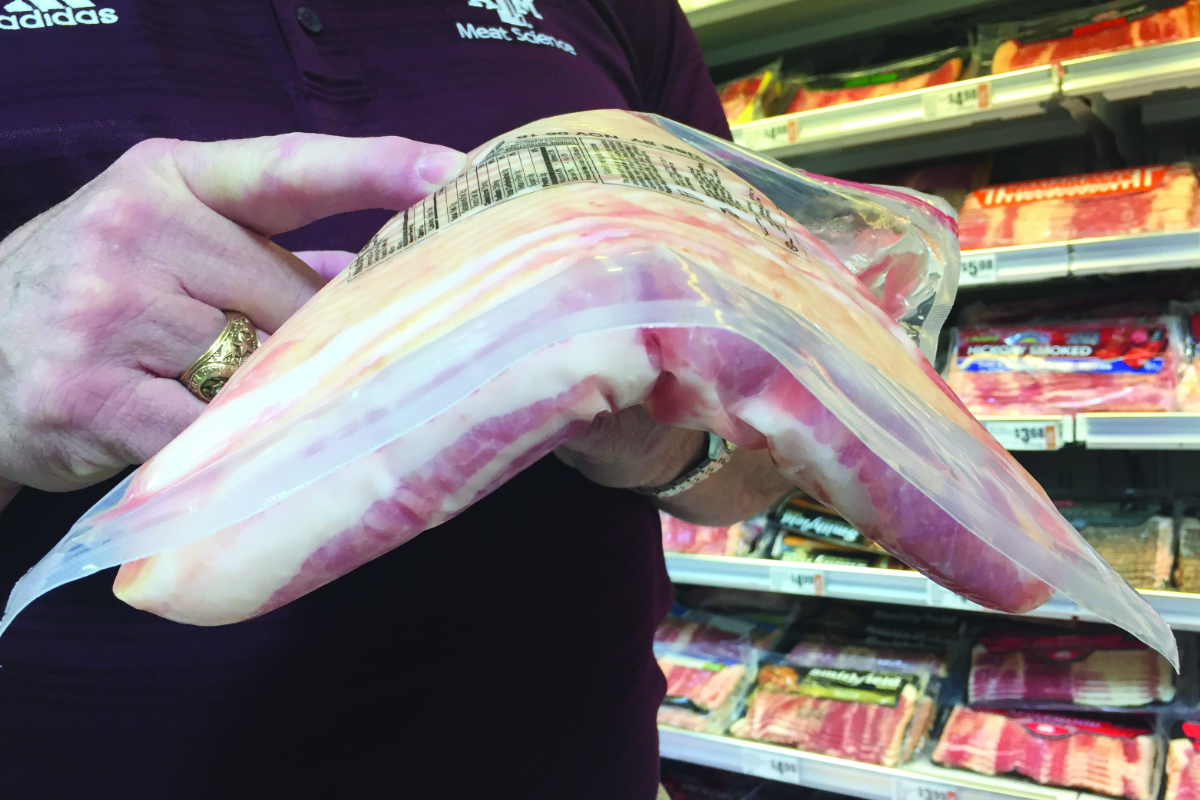Quality is a point of discussion, and sometimes debate, in the pork industry. Like beauty, quality sometimes lies in the eyes of the beholder and may differ between the producer, processor and consumer. Quality of lean typically relates to muscle color, texture/firmness, marbling, pH, overall functionality, tenderness and flavor. Attributes that are associated with fat quality frequently include color, texture, firmness, oxidative stability, odor and flavor. Both lean and fat quality are important to the success of the pork industry. Fat quality is especially relevant for pork bellies being used to produce bacon, and with the prediction that the global bacon market will continue to grow, then understanding the factors that influence fat quality is also important for this highly coveted cut.
One of the key aspects of fat quality in pork bellies, is firmness. Undesirable or low-quality bellies are often described as soft, wet and floppy. Firmness is determined by the ratio of unsaturated fatty acids compared to saturated fatty acids, and the higher the ratio the softer the fat. Firm bellies are better than soft – right? Unfortunately, it is more complicated than that. The debate often starts by asking: What is the desired level of firmness and how soft is too soft? It is followed by: How is the best way to measure firmness?
Degrees of firmness
The desired level of firmness may differ among and between consumers, processors and producers. Some consumers want leaner meats, including leaner bacon. The push to produce leaner pork, including leaner bellies, to meet these demands increases the percentage of unsaturated fatty acids and results in softer fat. In turn, these bellies result in softer bacon. Softer bacon is more difficult to slice, which creates a problem for processors. Also, softer fat may look less appealing to consumers in the retail case because it can have an oily appearance and the packages may fold or flop when picked up by the consumer. Bacon with soft fat may result in a shorter shelf life due to oxidative rancidity, which is not desirable for the consumer. Other consumers focus more on shrink/slice uniformity during cooking, crispness, and overall flavor of the bacon – all of which are improved with firmer fat.
Bacon with firm fat is easier for the processor to handle and slice, which is better for them. This bacon may look better in the retail package and may have a longer shelf life, compared to bacon with soft fat. So, processors must weigh consumer demands and consumer differences to determine which belly will work best for them and still be profitable. The producer is responsible for selecting genetic lines, feeding regimens and management practices that will deliver the lean and fat quality specifications their customers want. Diet formulations are often based on cost formulations and available feed ingredients, and changes in feeding regimens can influence fat firmness.

Once a desired level of firmness is established, there are questions on the best way for processors to measure firmness. Some processors use a subjective scale using finger depression and how easily the belly folds or rolls over itself. Another method is to use the “belly flop angle” test. For this test, the belly is placed skin-side down over a round bar and the interior angle between the two edges are measured. This is an inexpensive and non-destructive method for measuring firmness.
Another method is the Iodine Value (IV). This is an analytical analysis that measures the mass of iodine that is absorbed by unsaturated fat. The greater the IV, the more unsaturated fatty acids present and the softer the fat. When using IV for firmness evaluation, some bacon processors target at or below 70 and others allow values up to the mid/upper 70’s. Criticisms of this method are that it is destructive, it does not reflect compositional variation between different fat depots, and it is time consuming. As stated earlier, there is no standard method for measuring belly firmness, IV has limitations, and factors such as belly weight, width, and length could influence both the subjective scale and belly flop angle methods.
As reported in the September 2018 article in MEAT+POULTRY, “No break for bacon love,” the demand for bacon is still going strong. New bacon products made from turkey, chicken and even veggie bacon strips are competing for market shares against traditional bacon made from pork bellies. Therefore, ensuring today’s pork carcasses provide optimal lean and fat quality characteristics are crucial to the continued success of bacon.


